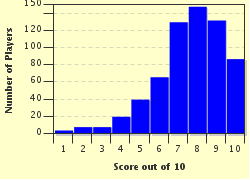Quiz Answer Key and Fun Facts
1. This constellation is named for a mythological animal. It contains eight named stars, and used to also have a ninth - Sirrah, which is now considered to be part of the Andromeda constellation. What constellation is this?
2. This constellation, a Zodiac constellation, is the second largest of all the constellations. The white dot towards the centre of the photo that is bigger than any of the other white dots is the constellation's brightest star, Spica. Which constellation is this?
3. The parts of this constellation, one of Ptolemy's 48 constellations identified in the 2nd century, are said to be wings, a tail and a beak. A giant stellar association in the constellation contains one of the largest stars known - around 1650 times the radius of the Sun! What constellation is this?
4. This constellation is recognized for its 'W' shape, formed by five main bright stars and several dimmer stars. Named for a queen in Greek myth, what constellation is this?
5. This constellation is considered to 'go with' the constellation Orion. If you look closely at the image, there is an arrow pointing to the constellation's beta star, but to the left of that star is Sirius, the brightest star that can be seen from Earth, besides the sun. What constellation is this?
6. This is a Zodiac constellation and represents Castor and Pollux from Greek mythology. What is the name of this constellation?
7. This is the smallest out of all the constellations, but one of the most well known. It is easily seen in the southern hemisphere pretty much all year round. What is it called?
8. Comprised of only three main stars (the triangle shape in the centre of the photo), this is a 'male' constellation with a similar-sounding name to its much larger female companion constellation. What constellation is this?
9. This constellation, named for a mythical animal, is not easily seen with the naked eye. Its main stars are not very bright, only slightly above magnitude 4.0. Its establishment is credited to Dutch astronomer Petrus Plancius. Which constellation is this?
10. This is one of the most recognized and obvious constellations. Seven of the stars, the brightest, form an hourglass shape that represents the body of a mythological person. The hourglass shape is one asterism of the constellation; the belt in the middle is another. Which constellation is this as a whole?
Source: Author
guitargoddess
This quiz was reviewed by FunTrivia editor
WesleyCrusher before going online.
Any errors found in FunTrivia content are routinely corrected through our feedback system.

